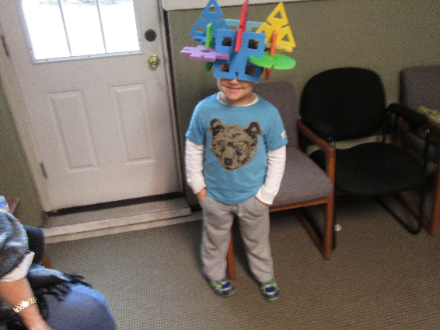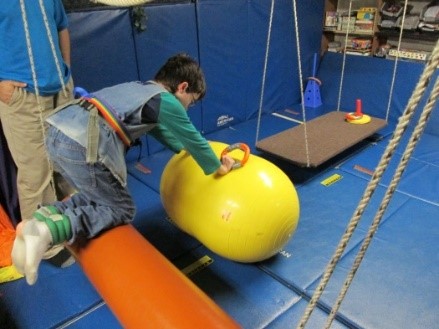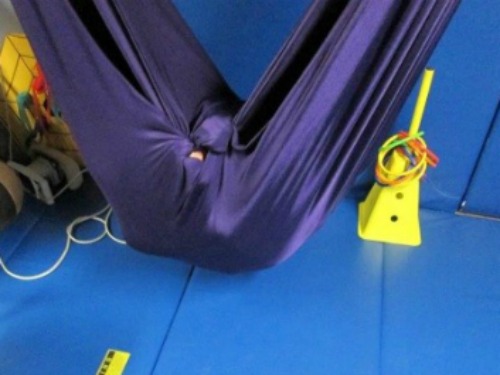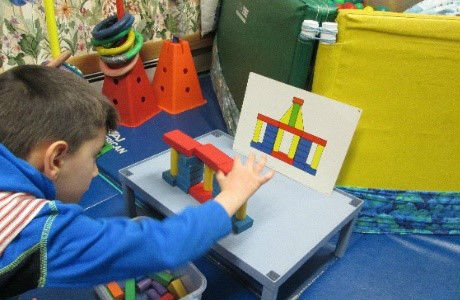Self–regulation is the ability to monitor and control one’s own behavior, emotions, or thoughts, altering them in accordance with the demands of the social and physical environment. The 4 main components of self-regulation have been referred to as the 4 A’s of infancy:
- Affect
- Attention
- Action Set
- Arousal
The disordered quality of any one of these factors is most easily seen during infancy through the preschool years. However, the need to self-regulate persists throughout the life span.

Affect – This youngster is using an engaging smile that communicates a positive emotional tone. He is communicating through his facial expression that he is pleased with himself after having made a hat out of the construction toy.

Attention – Building blocks to match a pattern while prone lying on a platform swing requires task organization and task maintenance skills in addition to visual perceptual skills. This child is showing the ability to subordinate postural control mechanisms while sustaining focused attention to the task. Integrating multiple sensory inputs is a primary component of attention.

Action Set – the term used to define the tendency to be “on the go” or hyper-kinetic readiness to engage in movement. Many times the child with SPD will respond to a question by moving the hands or the body rather than by using language to communicate. This child is showing an appropriate level of anticipatory set, readiness to carry out his plan of action.

Arousal – The ability to transition between sleep and an alert state is one component of self-regulation that is generally challenging for children with SPD. While some children, like the youngster shown here, prefer to “shut down” when they become overwhelmed by sensory stimuli, other children become over-aroused, hyper-responsive to the stimuli and. respond with behavioral disorganization. Loud sounds, fast speech, quick movements and poor safety awareness for self and for others tends to typify the child who is over-aroused.
Need help addressing these issues with your child? Email us or look at our Virtual Occupational Therapy sessions.


Comments are closed.